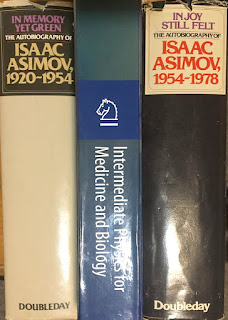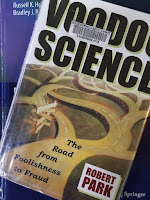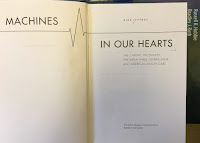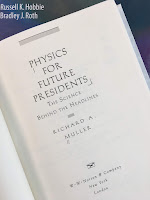In Chapter 8 of the 4th edition of Intermediate Physics for Medicine and Biology,
Russ Hobbie and I describe
transcranial magnetic stimulation. This technique is a classic example of how fundamental physics can be applied to solve a medical problem. A pulse of current is passed through a coil held near the head. The changing magnetic field produced by this current
induces an electric field that excites
neurons, thus allowing noninvasive, painless stimulation of the
brain. Magnetic simulation was invented in the 1980s by
Tony Barker and his colleagues in Great Britain. One of my
projects when I worked at the
National Institutes of Health in the late 1980s and early 1990s was to calculate the electric field induced in the head by different coil geometries. I had the pleasure of working with leading neurologists like
Mark Hallett,
Leo Cohen, and others in the
intramural program of the
National Institute of Neurological Disorders and Stroke, and with engineer
Peter Basser (my
May 30, 2008 entry to this blog tells the story of how Basser subsequently developed magnetic resonance diffusion tensor imaging).
For many years the main use of magnetic stimulation was as a diagnostic tool to assess diseases of the central nervous system, or as a research method to study how the brain changes over time. But another less well understood use of this technique is for therapy. Transcranial magnetic stimulation made news this fall when the Food and Drug Administration approved its use for treating depression (for more information about this decision, see the brain stimulant: stimulation blog or an article in IEEE Spectrum Online). Magnetic stimulation was first applied as a psychiatric treatment with the goal of improving on or replacing electroconvulsive therapy. The gist of both methods is to stimulate neurons in the brain, and thereby affect brain function. One major difference between electroconvulsive therapy and transcranial magnetic stimulation is that magnetic stimulation does not require a siezure. Electroconvulsive therapy is performed under sedation because in that case the brain must undergo a siezure in order to benefit the patient. The method is effective, but has severe side effects. Magnetic stimulation, on the other hand, is safe but less effective.
On October 8 of this year Neuronetics, a medical device company in Malvern, Pennsylvania, obtained FDA clearance for its Neurostar TMS Therapy for the Treatment of Depression. A recent double blind multisite study, whose results were published in the journal Biological Psychiatry (Volume 62, Pages 1208–1216, 2007), showed a statistically significant improvement in symptoms in patients treated with transcranial magnetic stimulation who had not responded to more traditional treatments for depression, compared to a control group. Despite these promising results, I think the effectiveness of magnetic stimulation as a psychiatric therapy is still an open question. I hope it proves successful, because it would be gratifying to me personally to have worked on a technique that could benefit so many people, but I’ll need to see some confirmation of the initial success before I consider it as a proven treatment. Nevertheless, it certainly makes an interesting case study in the application of physics to medicine and biology.











